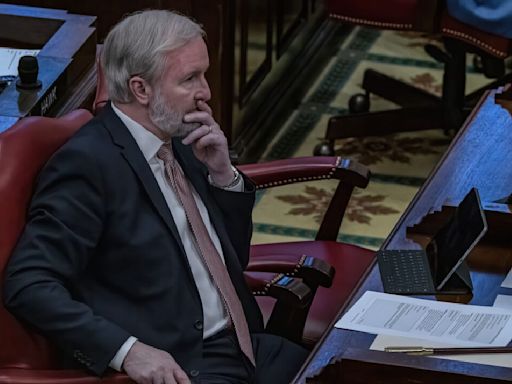Search results
Moneycontrol is a website that provides business news, stock market updates, economy and finance news, sensex, nifty, global market, NSE, BSE live IPO news and more. You can also invest in equity, debt, ELSS funds and compare their returns and ratings.
- Markets
Share Market Today - Stock Market and Share Market Live...
- Portfolio
Click here to track and Analyse your mutual fund...
- Latest News
Moneycontrol.com is a leading financial information source,...
- Mutual Funds
Moneycontrol provides the Complete Guide to Mutual Funds,...
- Hindi
Latest बिजनेस न्यूज़ (Business news) today Hindi - पढ़ें...
- YES BANK
Yes Bank Ltd. is one of the leading private sector banks in...
- Login
Business News Today: Read the latest business news on the...
- Tech/Startups
Tech Startup news Today: Latest news, daily updates,...
- Markets
Get the latest updates on Indian and global stock markets, business, economy and finance. Find out the top stories, trends, analysis and insights on MSN Money.
MoneyControl.com is a financial information source for CNBC TV18, covering equity, stock, commodities, personal finance and more. Get live updates, market outlook, stock recommendations, announcements and IPOs.
- What Is Money?
- Medium of Exchange
- Impressions Create Everything
- How Is Money Measured?
- Active Money
- How Money Is Created
- The History of American Money
- What Does Money Symbolize?
- What Is Liquidity?
- What Is the Difference Between Money and Currency?
- GeneratedCaptionsTabForHeroSec
Money is any item or medium of exchange that symbolizes perceived value. As a result, it is accepted by people for the payment of goods and services, as well as the repayment of loans. Money makes the world go 'round. Economies rely on money to facilitate transactions and to power financial growth. Typically, it is economists who define money, where it comes from, and what it's worth. Here are the multifaceted characteristics of money.
Money is a medium of exchange; it allows people and businesses to obtain what they need to live and thrive.
Bartering was one way that people exchanged goods for other goods before money was created.
Like gold and other precious metals, money has worth because for most people it represents something valuable.
Fiat money is government-issued currency that is not backed by a physical commodity but by the stability of the issuing government.
Above all, money is a unit of account - a socially accepted standard unit with which things are priced.
Before the development of a
—that is, money—people would barter to obtain the goods and services they needed. Two individuals, each possessing some goods the other wanted, would enter into an agreement to trade.
Early forms of bartering, however, do not provide the transferability and divisibility that makes trading efficient. For instance, if someone has cows but needs bananas, they must find someone who not only has bananas but also the desire for meat. What if that individual finds someone who has the need for meat but no bananas and can only offer potatoes? To get meat, that person must find someone who has bananas and wants potatoes, and so on.
The lack of transferability of bartering for goods is tiring, confusing, and inefficient. But that is not where the problems end; even if the person finds someone with whom to trade meat for bananas, they may not consider a bunch of bananas to be worth a whole cow. Such a trade requires coming to an agreement and devising a way to determine how many bananas are worth certain parts of the cow.
The second type of money is
, which does not require backing by a physical commodity. Instead, the value of fiat currencies is set by supply and demand and people's faith in its worth. Fiat money developed because gold was a scarce resource, and rapidly growing economies growing couldn't always mine enough to back their currency supply requirements. For a booming economy, the need for gold to give money value is extremely inefficient, especially when its value is really created by people's perceptions.
Fiat money becomes the token of people's perception of worth, the basis for why money is created. An economy that is growing is apparently succeeding in producing other things that are valuable to itself and other economies. The stronger the economy, the stronger its money will be perceived (and sought after) and vice versa. However, people's perceptions must be supported by an economy that can produce the products and services that people want.
For example, beginning in 1971, the U.S. dollar was taken off the gold standard—the dollar was no longer redeemable in gold, and the price of gold was no longer fixed to any dollar amount. This was made official in 1976. This meant that it was now possible to create more paper money than there was gold to back it; the health of the U.S. economy backed the dollar's value. If the economy stalls, the value of the U.S. dollar will drop both domestically through inflation and internationally through currency exchange rates. The implosion of the U.S. economy would plunge the world into a financial dark age, so many other countries and entities are working tirelessly to ensure that never happens.
But exactly how much money is out there, and what forms does it take? Economists and investors ask this question to determine whether there is inflation or deflation. Money is separated into three categories so that it is more discernible for measurement purposes:
– This category of money includes all physical denominations of coins and currency; demand deposits, which are checking accounts and NOW accounts; and travelers' checks. It also includes other forms of liquid deposits and assets such as savings accounts. This category of money is the narrowest of the three, and is essentially the money used to buy things and make payments (see the "active money" section below).
– With broader criteria, this category adds all the money found in M1 to all time-related deposits, many types of retirement accounts, and non-institutional money market funds. This category represents money that can be readily transferred into cash.
– The broadest class of money, M3 combines all money found in the M2 definition and adds to it all large time deposits, institutional money market funds, short-term repurchase agreements, along with other larger liquid assets. M3 indicates a country's money supply or the total amount of money within an economy.
The M1 category includes what's known as active money—the total value of coins and paper currency in circulation as well as liquid deposits and accounts. The amount of active money fluctuates seasonally, monthly, weekly, and daily. In the United States,
distribute new currency for the U.S. Treasury Department. Banks lend money out to customers, which becomes active money once it is actively circulated.
We have discussed why and how money, a representation of perceived value, is created in the economy, but another important factor concerning money and the economy is how a country's central bank (the central bank in the United States is the Federal Reserve or the Fed) can influence and manipulate the money supply.
If the Fed wants to increase the amount of money in circulation, perhaps to boost economic activity, the central bank can, of course, print it. However, the physical bills are only a small part of the money supply.
In the 17th century, Great Britain was determined to keep control of both the American colonies and the natural resources they controlled. To do this, the British limited the money supply and made it illegal for the colonies to mint coins of their own. Instead, the colonies were forced to trade using English bills of exchange that could only be redeemed for English goods. Colonists were paid for their goods with these same bills, effectively cutting them off from trading with other countries.
In response, the colonies regressed to a barter system using ammunition, tobacco, nails, pelts, and anything else that could be traded. Colonists also gathered whatever foreign currencies they could, the most popular being the large, silver Spanish dollars. These were called pieces of eight because, when you had to make change, you pulled out your knife and hacked it into eight bits. From this, we have the expression "two bits," meaning a quarter of a dollar.
In an economic context, money symbolizes perceived value. This allows money to be used as a means of exchanging goods and services. On a personal level, money can symbolize intangible qualities, including wealth, safety, status, and more.
Liquidity is a measure of how quickly an asset can be converted into legal tender. Cash is the most liquid of all assets. Short-term securities and assets in money market accounts follow. Less liquid assets include physical items like houses, cars, or jewelry. Though they can ultimately be converted into legal tender, it may take time to do so, and...
Money and currency are interrelated but different terms. Currency is one form of money. Often issued by a government, it is one type of payment that people can use within a jurisdiction. Money, however, refers more broadly to a system of perceived value, which allows for the exchange of goods and services.
Learn how money evolved from bartering to commodity money to fiat money, and how it is measured and created. Explore the characteristics and functions of money as a medium of exchange, a unit of account, and a store of value.
Money. Banknotes and coins. Money is any item or verifiable record that is generally accepted as payment for goods and services and repayment of debts, such as taxes, in a particular country or socio-economic context.
Jul 15, 2024 · money, a commodity accepted by general consent as a medium of economic exchange. It is the medium in which prices and values are expressed; as currency, it circulates anonymously from person to person and country to country, thus facilitating trade, and it is the principal measure of wealth.
People also ask
What does money mean?
What is the function of money?
What is bank money?
What is the difference between legal tender and bank money?
Jun 30, 2024 · Learn what money is, how it works, and why it is useful for exchange, storage, and accounting. Explore the different types of money, from commodities to cryptocurrencies, and their advantages and disadvantages.


